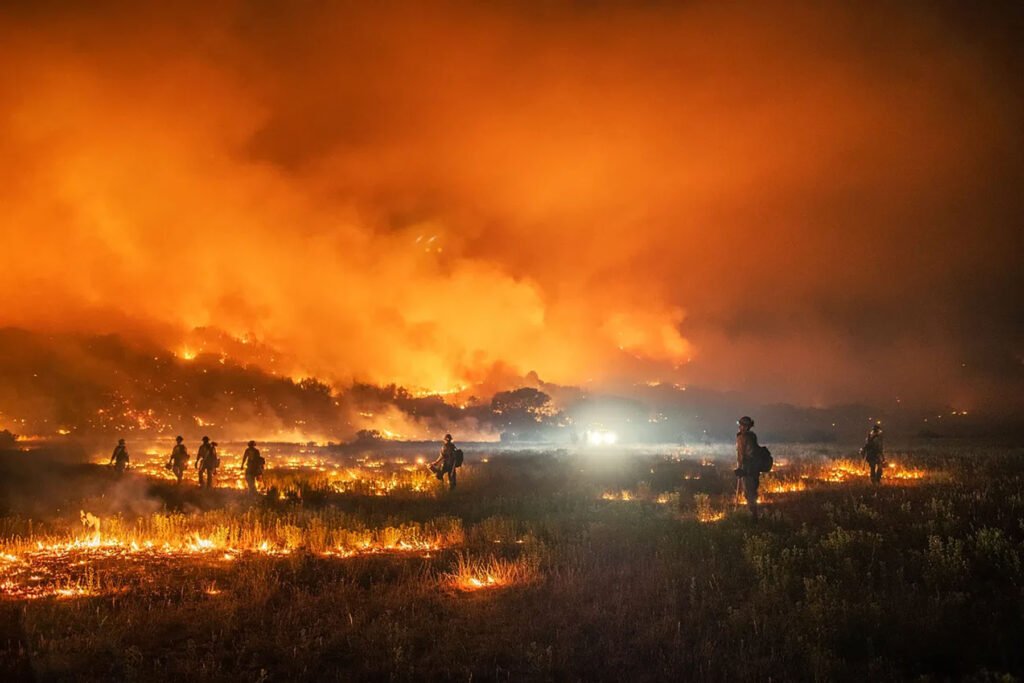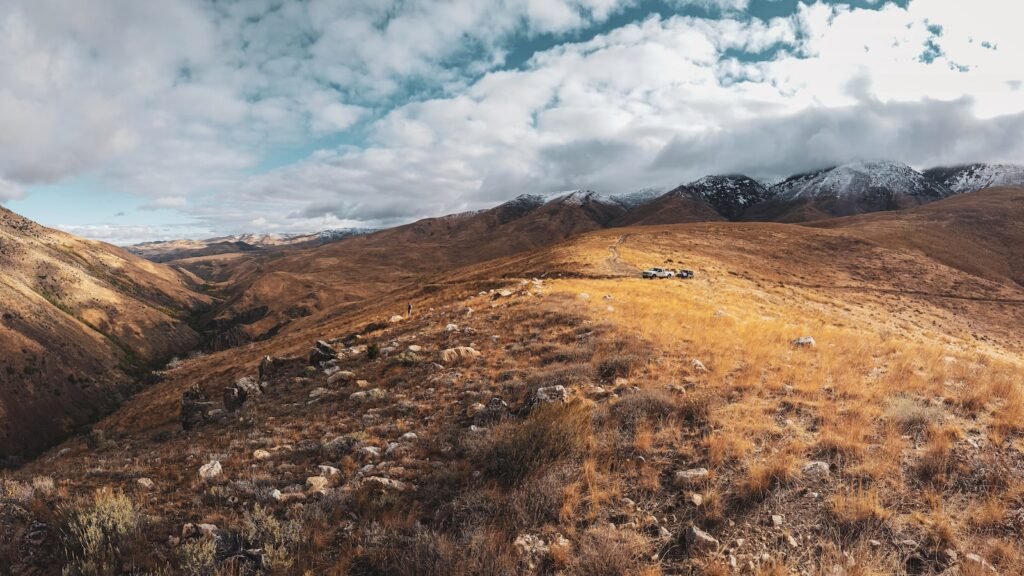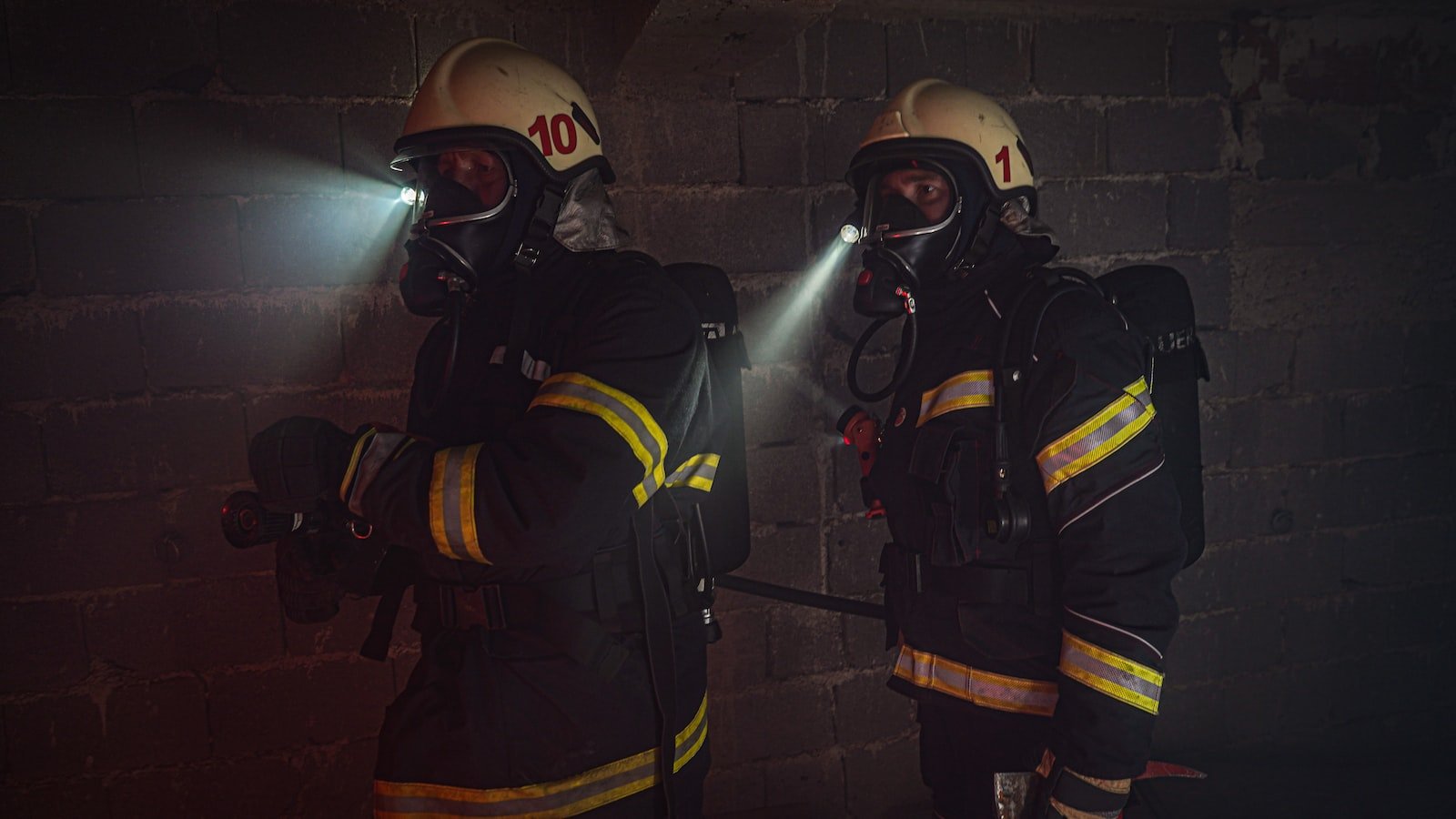Now Reading: The Basics of Wilderness Orienteering
-
01
The Basics of Wilderness Orienteering

The Basics of Wilderness Orienteering
Tucked away within the untamed embrace of nature lies an intriguing art form known as wilderness orienteering. In this whimsical realm, where sturdy boots meet mossy trails, adventurers find themselves at the mercy of compasses, maps, and something far more elusive— their own instincts. With a touch of intrigue and a pinch of mystique, the sport of wilderness orienteering beckons us to indulge in the thrill of the unknown, to surrender ourselves to the bewildering beauty of the great outdoors. So, prepare to embark on a journey that transcends both physical and mental boundaries, as we delve into the basics of this enchanting pursuit, unlocking its secrets one direction at a time.
Table of Contents
- Navigating Without Technology: Mastering the Art of Wilderness Orienteering
- Developing Map Reading Skills: A Key Element for Successful Orienteering
- Utilizing Compass Techniques: Tips to Enhance Accuracy in Wilderness Navigation
- Understanding Topographic Maps: Unveiling Hidden Gems of Wilderness Navigation
- Surviving Off-Trail: Essential Techniques for Orienteering in Unmarked Terrains
- Q&A
- Final Thoughts

Navigating Without Technology: Mastering the Art of Wilderness Orienteering
Nature’s labyrinth awaits those seeking an adventure far from the buzzing screens and beeping gadgets. In the age of GPS and digital maps, it’s a refreshing change to explore the wilderness with bare necessities and rely solely on the ancient art of orienteering. Wilderness orienteering takes you back to your primal instincts, honing your navigation skills and deepening your connection with nature.
Mastering the Compass:
When venturing into uncharted territories, a trusty compass becomes your guiding star. Unlocking its full potential requires understanding its components and how to adjust it accordingly. Familiarize yourself with the cardinal directions – North, South, East, West – and the degree markings around the compass’s housing. Learning how to align the needle with the orienting arrow will ensure accuracy in your navigational endeavors.
Decoding Maps and Topography:
Maps are the cartographic keys to unlocking the secrets of the wild. Getting comfortable with reading contour lines, symbols, and scales will empower you to decipher the landscape’s hidden clues. Topographic maps hold rich information about the elevation, terrain features, and water sources, helping you make informed decisions on your route. Remember to keep an eye out for landmarks, such as distinctive trees or rock formations, which can serve as invaluable checkpoints.
Embracing Nature’s Signs:
When electronic gadgets are left behind, nature steps forward to provide an array of indicators. Sharpen your observation skills to recognize subtle cues like moss growth patterns on trees or the direction of prevailing winds. Animal tracks, water flow, and sun position can all act as your nemesis or ally. By attuning yourself to these natural signs, you become more attuned to the rhythms of the wilderness and discover hidden pathways with newfound ease.

Developing Map Reading Skills: A Key Element for Successful Orienteering
Orienteering, a thrilling outdoor activity that combines athleticism and navigation, relies heavily on the ability to read maps effectively. It is an exhilarating experience where participants navigate through unfamiliar terrain, using only a map and compass to find checkpoints scattered across the designated course. To excel in this sport, developing strong map reading skills is absolutely essential.
Here are some key tips to improve your map reading abilities:
- Study the Legend: Familiarize yourself with the symbols and colors used in the map’s legend. This will help you understand the various features and contours depicted on the map.
- Practice interpreting contours: Master the art of interpreting contour lines and understand how they represent elevation changes. This skill enables you to visualize the terrain accurately and plan efficient routes.
- Pace Counting: Develop reliable techniques for estimating distance traveled by using your pace count. Practice counting your steps over a known distance and then use this information to gauge distances on the map.
Remember, building strong map reading skills takes time and practice. So, don’t get discouraged if you face challenges at the beginning. With consistent effort and a curious mindset, you will soon be navigating through orienteering courses with confidence and precision! Strap on your compass, grab your map, and let the adventure begin!
Utilizing Compass Techniques: Tips to Enhance Accuracy in Wilderness Navigation
Tips for Enhancing Accuracy in Wilderness Navigation
When venturing into the great outdoors, accurate navigation is crucial for ensuring your safety and getting the most out of your wilderness experience. Utilizing compass techniques can greatly enhance your accuracy and give you the confidence to explore uncharted territories. Here are a few insider tips to sharpen your navigation skills:
- Understand your compass: Familiarize yourself with the different parts of a compass and learn how to read it accurately. Pay attention to the needle, the rotating bezel, and the cardinal directions.
- Take declination into account: Declination refers to the angle between true north and magnetic north. Adjusting for declination ensures that your compass readings align with the map you’re using. Always check the declination value specific to your location and make the necessary corrections.
- Use landmarks and bearings: To maintain a steady course, identify prominent landmarks in your surroundings. Use your compass to determine their bearings and plot them on your map. This will help you stay on track and avoid unnecessary detours.
- Measure distance accurately: Not only should you estimate the distance you plan to cover, but you should also learn how to pace count. By counting your steps and converting them into distance units, such as meters or yards, you can accurately navigate through wilderness areas without relying solely on visual landmarks.
- Double-check your work: Mistakes can happen, even to the experienced navigators. Always cross-reference your compass readings with your map and surroundings. Keep a mental note of the distance you’ve traveled, natural features you encounter, and any terrain changes.
By following these tips, you’ll enhance your accuracy in wilderness navigation and be well-prepared to tackle any adventure that awaits you in the great outdoors. Remember, a compass is not just a tool; it’s your trusty guide to help you navigate through the unknown with confidence and precision.
Understanding Topographic Maps: Unveiling Hidden Gems of Wilderness Navigation
Topographic maps are much more than just pretty pictures. They hold the key to unlocking hidden gems in the wilderness. With their intricate details and wealth of information, these maps provide invaluable navigation tools for adventurers and outdoor enthusiasts.
From towering peaks to hidden lakes, topographic maps use contour lines to depict the shape and elevation of the land. These lines connect points of equal elevation, allowing you to visualize the terrain in three dimensions. By studying these lines, adventurers can plan their route, identify potential obstacles, and find the best vantage points for breathtaking views.
But it doesn’t stop there! Topographic maps also reveal the location of rivers, creeks, and even man-made structures like roads and buildings. They provide coordinates and geographic references, empowering explorers to find their way in the wilderness, regardless of how remote or unfamiliar the area may be. So whether you’re an experienced hiker or a novice camper, mastering the art of interpreting topographic maps is a skill worth acquiring.
So, dust off that compass, grab your map, and let the hidden gems of wilderness navigation be unveiled before your eyes. Explore the vast unknown with confidence, armed with the knowledge and insights that topographic maps provide. It’s time to embark on your next adventure and discover the wonders that lie beyond the beaten path.
Surviving Off-Trail: Essential Techniques for Orienteering in Unmarked Terrains
Mastering the Compass: One of the most crucial skills for surviving off-trail is the ability to navigate with a compass. Understanding how to read a compass and interpret direction can mean the difference between life and death. Start by familiarizing yourself with the different parts of a compass: the baseplate, the magnetic needle, and the direction of travel arrow. Always hold the compass level and away from any metal objects that could interfere with its accuracy. By aligning the map with the compass and orienting it correctly, you can determine a precise bearing to follow.
Recognizing Natural Landmarks: When you find yourself in unmarked terrains, relying solely on a compass might not be enough. Learning to read the landscape and recognize natural landmarks is another valuable skill. Keep an eye out for distinctive features such as prominent rock formations, unique tree formations, or distinctive rivers or streams. Take note of these landmarks and use them as reference points to maintain your direction. Remember, nature rarely repeats itself, so each landmark you identify will become a reliable navigational tool.
Creating Trail Marks: In unmarked terrains, it’s crucial to leave a trace of your path to ensure you can find your way back. When starting your journey, mark the starting point with visible indicators like stacked rocks or tied ribbons to trees. As you progress, establish a signaling system that reflects your path, such as broken branches or unique symbols etched onto trees. However, it’s equally important to respect nature and not leave permanent traces behind. Always opt for temporary markings that will eventually fade away, allowing the wilderness to return to its natural state.
Q&A
What is wilderness orienteering?
Wilderness orienteering is an outdoor activity that involves using a map and compass to navigate and find specific checkpoints in a natural environment, such as a forest or mountains.
Why is wilderness orienteering such a popular activity?
Wilderness orienteering is popular because it provides a thrilling adventure, improves navigation skills, and allows individuals to explore and appreciate the beauty of nature.
What are the essential tools for wilderness orienteering?
The essential tools for wilderness orienteering include a topographic map, a reliable compass, a whistle for safety, a writing instrument, and a watch to keep track of time.
How do you read a topographic map?
To read a topographic map, you need to understand the contour lines which represent the elevation changes. The closer together the lines, the steeper the terrain, while lines spread farther apart indicate flatter areas.
How do you orient a map using a compass?
To orient a map using a compass, place the compass on the map with the needle pointing north. Rotate the map and compass together until the orienting arrow on the compass aligns with the magnetic north on the map.
What are some basic navigation techniques in wilderness orienteering?
Some basic navigation techniques in wilderness orienteering include using handrails (natural features) to guide your route, aiming off slightly to ensure you don’t miss your destination, and using attack points (well-defined points) to navigate to the final checkpoint.
What safety measures should one take during wilderness orienteering?
Some essential safety measures during wilderness orienteering include informing someone about your plans and estimated return time, carrying extra food and water, wearing appropriate clothing and footwear, and always having a whistle for emergencies.
What do you do if you get lost during wilderness orienteering?
If you get lost during wilderness orienteering, the best course of action is to stay calm, retrace your steps, find a prominent feature on your map to relocate yourself, and if needed, use your whistle to attract attention and seek help.
What are some advanced skills for wilderness orienteering?
Advanced skills for wilderness orienteering include understanding route planning and choosing the most efficient path, using a pacing technique to measure distances on the ground, and learning to navigate without a compass using natural features and celestial objects.
Final Thoughts
As we conclude this enlightening journey through the basics of wilderness orienteering, take a moment to appreciate the profound beauty and inherent mystery of the great outdoors. Armed with newfound knowledge and a compass in hand, you now possess the invaluable tools to navigate the untamed wilderness with confidence and grace.
Remember, orienteering is not merely a physical exercise; it is a way of weaving ourselves into the tapestry of nature, fostering a deep connection with the wilderness that transcends the ephemeral passing of time. It is in these moments of solitude and exploration that we rediscover our primal instinct, igniting a spark within us that harkens back to our ancestors who first roamed these untamed lands.
As we tiptoe through the forested realms, let us not forget that orienteering is not solely about reaching a destination; rather, it invites us to revel in the journey itself. Each step taken is an opportunity to learn, to adapt, and to grow. In the midst of dense thickets and towering peaks, we acquire not only a sense of direction but also resilience, patience, and fortitude.
Wilderness orienteering, dear reader, invites us to unlock the hidden secrets of nature’s labyrinth, as well as our own. It beckons explorers from all walks of life, allowing us to merge our inquisitive souls with the delicate balance of the natural world. Within the embrace of towering trees and babbling brooks, we witness the symphony of life playing out in its purest essence.
So, in the spirit of adventure, may you lace up your boots, drape yourself in the mantle of exploration, and embark on the path less traveled. As you venture forth with your newfound orienteering skills, remember, nature holds infinite marvels and treasures for those who dare to seek them. Let the wilderness be your guide, and allow your sense of awe to be your compass.
For in the heart of the wild, as you find yourself navigating uncharted territory, you will discover a profound sense of enchantment and an unbreakable bond with the world around you. Wilderness orienteering is an ever-unfolding story, and you, dear reader, have the pen to author each thrilling chapter, one compass bearing at a time.
So, with boldness in your step and a thirst for adventure in your soul, set forth, brave wanderer, into the realms of wilderness orienteering. Embrace the unknown, for therein lies the beauty of the untamed world, waiting to be deciphered by those who are willing to seek it.
As an affiliate, my content may feature links to products I personally use and recommend. By taking action, like subscribing or making a purchase, you’ll be supporting my work and fueling my taco cravings at the same time. Win-win, right?
Want to read more? Check out our Affiliate Disclosure page.





